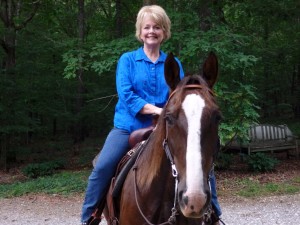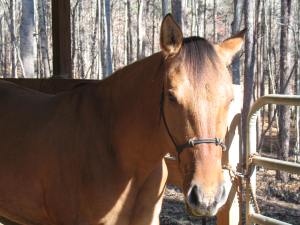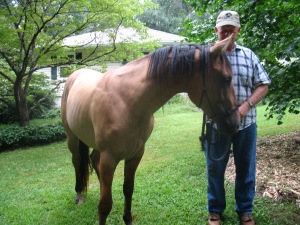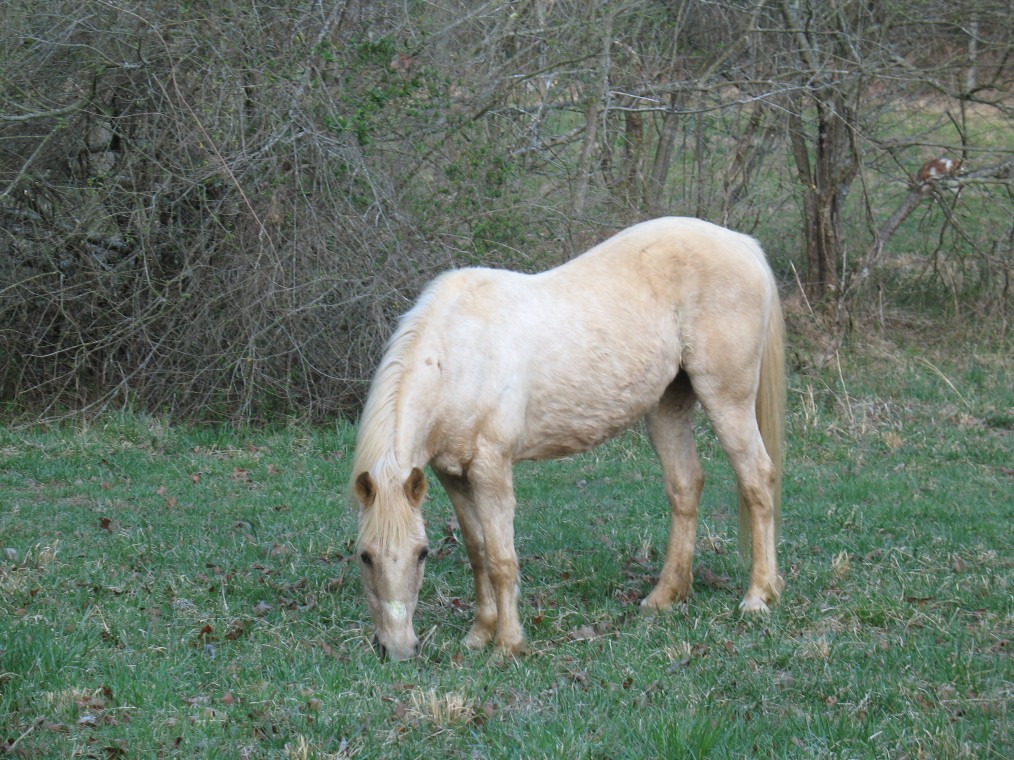Last November a friend and I spent three days horseback riding the beautiful trails of the Cumberland Plateau in Tennessee. A local stable rented us quarter horses for our stay, and we spent long hours in the saddle each day. Interestingly enough, with only a few exceptions, the other riders we met were on gaited horses. Those horses’ smooth ground covering strides left us in the dust on our slow walking quarter horses.
Getting home, I began my research, and decided my next horse would be gaited. I was not set on one certain breed, but was willing to look at Tennessee Walkers, Spotted Saddle Horse, one of the Mountain Horse breeds, or Paso Finos. My requirements were pretty simple:
1. 15 hands or shorter
2. Between 7-11 years in age
3. Safe for this senior citizen who has never ridden a gaited horse.
And the hunt began… HorseClicks, Equine Now, Craigslist ads. I contacted owners of at least five different horses – some had already been sold, while one owner was honest enough to tell me her horse was probably more than I needed to handle. I came across one Paso Fino who looked and sounded promising in the ad, so one Saturday I drove over four hours to South Carolina to try him out. He was smaller in height than the ad indicated, and after riding him, I didn’t feel any connection. The hunt continued.
Towards the end of March, I was checking ads on Huntsville, Alabama Craigslist , and one really got my attention. A 7 year old TWH gelding, 14.3 hands, trail safe, was for sale in Shelbyville, Tennessee, the Walking Horse breed epicenter. I made the call, the horse sounded promising; so on Wednesday, March 26, I headed up I-75 to meet him.
His owners were an engaging older couple who had a small breeding farm for Tennessee Walkers. Wayne, 72 years of age, and with two knee replacements, rides every day, several times a day, but did say he now sends his young horses out to a trainer for their first rides. He and Sandra walked me through the barn, telling me about each horse in the stalls, from a broodmare with bulging sides close to foaling, a pretty young mare who was sold and on her way to her new home, to their striking gray stallion. And then we got to the last stall.
Bubba met us at the door, with his bold white blaze and incredibly liquid brown eyes. I completely forgot all the other horses in the barn, and only had eyes for this boy. He stuck his nose out to smell me, and gazed at me with those eyes. Wayne saddled him and knowing I had never ridden a gaited horse, rode him around to let me see how he moved. Then it was my turn.
He and I started up the driveway, both of my hands on the reins, feeling his powerful stride beneath me. After several trips up and down the drive, I took him out to a large field to let him stretch out some. By the time I got back to the barn, I knew Bubba was the horse for me.
My husband and I pulled our trailer back up to Shelbyville on Sunday to bring him home. Sandra told me that over the past few weeks, several potential buyers had come to ride him, but they dissuaded them due to not being a good fit. She said the second time I rode down the driveway on him, she knew I was the person Bubba had been waiting for… sigh!
Bubba loaded like a dream, and was the perfect passenger on the over four hour trip home. Belle had a new buddy, and I had my first gaited horse. Let the adventure begin!


























